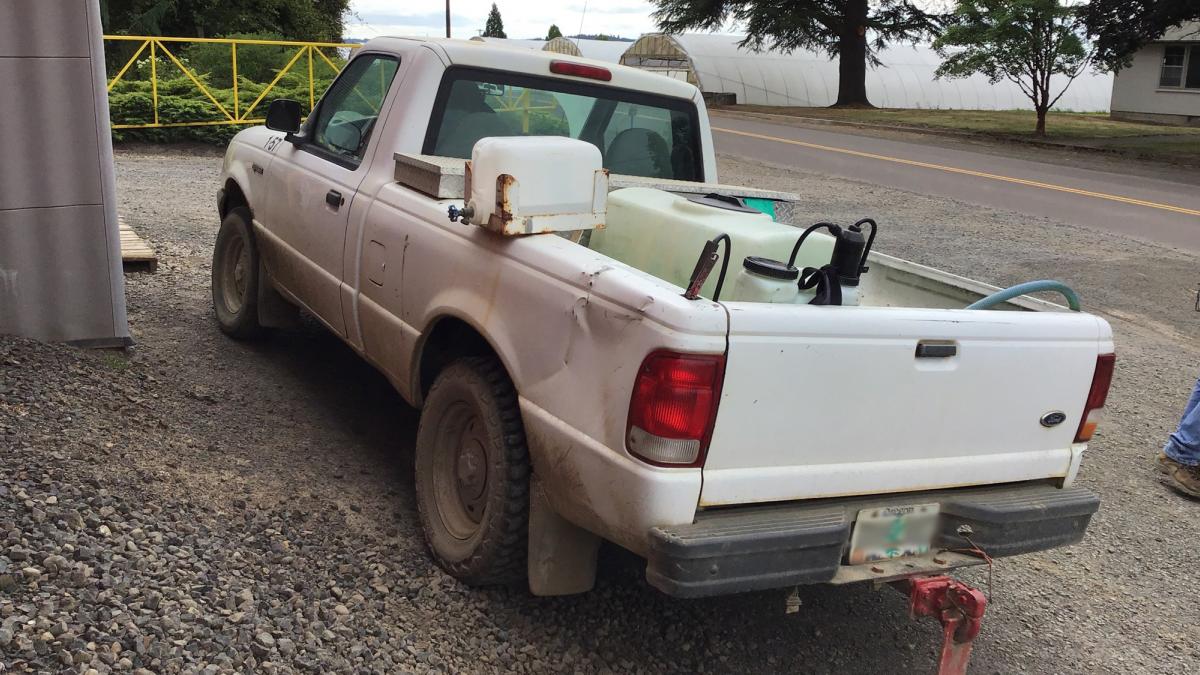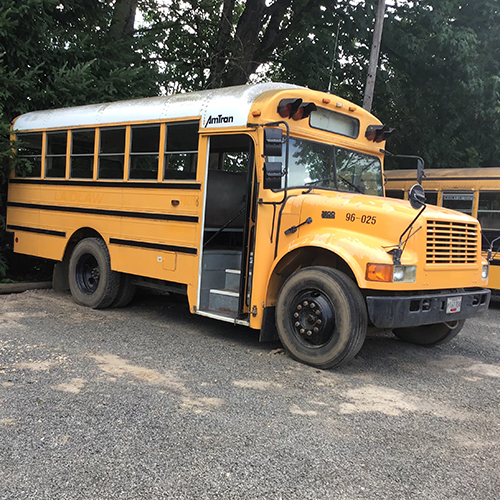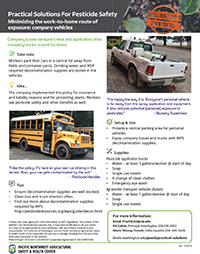
Photos by Kit Galvin
 Take note
Take note
Workers park their cars in a central lot away from fields and container yards. Drinking water and WPS required decontamination supplies are stored in the vehicles.
 Idea...
Idea...
The company implemented this policy for insurance and liability reasons and for protecting plants. Workers see pesticide safety and other benefits as well.
 Setup & use
Setup & use
- Provide a central parking area for personal vehicles.
- Equip company buses and trucks with WPS decontamination supplies.
 Supplies
Supplies
Pesticide applicator trucks
- Water – a minimum of 3 gallons/worker at the start of day
- Soap
- Single use towels
- A change of clean clothes
- Emergency eye wash
Ag worker transport vehicles (buses)
- Water – a minimum of 1 gallon/worker at the start of day
- Soap
- Single use towels
 Tips
Tips
- Ensure decontamination supplies are well stocked.
- Clean bus and truck interiors often.
- Change clothes before getting into personal vehicles, if possible.
- Find out more about decontamination supplies required by WPS.

PERC Worker Protection Standard Guide
Pesticide Educational Resources Collaborative (PERC)
Decontamination Supply Requirements
Worker Protection Standard (WPS)
Federal
- 40 CFR §170.509 Decontamination and eye flushing supplies for [agricultural] handlers
- 40 CFR §170.411 Decontamination supplies for [agricultural] workers
Washington State
- WAC 16-233-221 Decontamination and eye flushing supplies for [agricultural] handlers
- WAC 16-233-126 Decontamination supplies for [agricultural] workers
Oregon State (Oregon Administrative Rules)
- OAR Division 4 Subdivision W Worker Protection Standard
- OAR 170.509 Decontamination and eye flushing supplies for handlers
- OAR 437-004-6509 Emergency eye-washes and eye flushing supplies
We hope that you are inspired to use these solutions in your workplace. Did you try one of the practical solutions or develop a new one? We would appreciate hearing about your ideas and experiences.
Thank you and safe pesticide handling,
PNASH
Contact your state agency for more information on WPS regulations. The content of this website is for informational purposes only. It may need modification to fit your needs or it may not be appropriate for your workplace. Safe use of these solutions is your responsibility. The University of Washington and the Pacific Northwest Agricultural Safety & Health Center is not responsible for any loss or damage resulting from the use of the information provided on this website.
PNASH Project 2016-2021 (CDC/NIOSH Cooperative Agreement # U54 OH007544)
Contact us
Project Email:
PractSLN2@uw.edu
Project staff:
Maria Tchong-French (habla español)
Email: mitchong@uw.edu
206.685.6728

